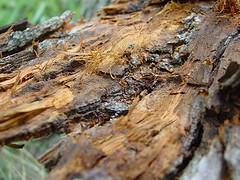 Arup will be engineering that provides the technology for this project last December 2 Qatar was selected by FIFA as the future site of the 2022 World Cup. The challenge now is to demonstrate to the world how advanced technology can cope with adverse temperatures for the practice of football. With a population of just over one million inhabitants and the promise of filling 50,000 seater stadiums, Qatar is a country with little football history. But that has not been a difficulty for the candidacy. The worst thing has been to overcome the problem of temperature in summer, which can reach 50 degrees Celsius.
Arup will be engineering that provides the technology for this project last December 2 Qatar was selected by FIFA as the future site of the 2022 World Cup. The challenge now is to demonstrate to the world how advanced technology can cope with adverse temperatures for the practice of football. With a population of just over one million inhabitants and the promise of filling 50,000 seater stadiums, Qatar is a country with little football history. But that has not been a difficulty for the candidacy. The worst thing has been to overcome the problem of temperature in summer, which can reach 50 degrees Celsius.
To respond to these climatic challenges the candidacy riyal had services of Arup international engineering, who was in charge of designing a prototype of latest generation Stadium. The prototype, which was taught to the completely finished FIFA last September, consists of a pilot 500 seater stadium capable of creating a controlled microclimate, both on the football field and in the stands and the rest of public spaces. A solar Orchard next to the stadium generates electricity and hot water to high temperature, which then becomes cold to weatherize the play space. As a stadium usage profile corresponds to a very high energy demand during a short period of time, the cold generated by solar panels is stored underneath the stadium several hours before the event, then it downloaded during the game. The solar Orchard, however, will operate throughout the year, exporting electricity to the public network when the stadium is not in use. The sizing of the solar Park ensures that the energy generated during the year exceeds the projected demand for parties to dispute, thus generating a solution with neutral emission of CO2. Pilot Stadium designed by Arup engineers served as proof of this innovative cooling concept during a visit to the country in the evaluation of the FIFA Committee for the qualification of nominations phase.
 The flotation machine is the key equipment in the flotation separating process. Now Hongxing experts will give you some basic information about two kinds of common flotation machines.The performance characteristics of SF series flotation flotation machineThe machine is used for extracting of metals like gold, argent, iron, lead, zinc, molybdenum, nickel and aluminum. It is also suitable for extracting of ferrous metal and non-metals.This machine is driven through the V-belt driving the impellers, which brings centrifugal effect to form the negative pressure, On the one hand, the flotation machine inhale sufficient air to mix with ore slurry; on the other hand, this equipment stirs ore slurry and mix with medication to form the mineralized froth. To adjust the height of flashboard to control the liquid level and make the froth scraped by loam board useful.The instructions of SF series flotation machine1. To check the bolts before starting the machine.2. To use hand instead of impellers to prevent the sediment from adding the burden of electromotor.3.
The flotation machine is the key equipment in the flotation separating process. Now Hongxing experts will give you some basic information about two kinds of common flotation machines.The performance characteristics of SF series flotation flotation machineThe machine is used for extracting of metals like gold, argent, iron, lead, zinc, molybdenum, nickel and aluminum. It is also suitable for extracting of ferrous metal and non-metals.This machine is driven through the V-belt driving the impellers, which brings centrifugal effect to form the negative pressure, On the one hand, the flotation machine inhale sufficient air to mix with ore slurry; on the other hand, this equipment stirs ore slurry and mix with medication to form the mineralized froth. To adjust the height of flashboard to control the liquid level and make the froth scraped by loam board useful.The instructions of SF series flotation machine1. To check the bolts before starting the machine.2. To use hand instead of impellers to prevent the sediment from adding the burden of electromotor.3.  Globally, 1. 600 million people have no access to electricity. Essential for human development, energy is not used in the world in political, economic, social and environmental awareness. It is everybody’s problem, not only in the countries of the South, but also from the North. There is enough for everyone.
Globally, 1. 600 million people have no access to electricity. Essential for human development, energy is not used in the world in political, economic, social and environmental awareness. It is everybody’s problem, not only in the countries of the South, but also from the North. There is enough for everyone.  1. The future of mobile telephony is inevitably the IP telephony. Currently all phones are created to support VoIP technology, then in a few years the same will be the official means used for telephone communications. 2. Reduces costs on calls by 80%. We can talk to any corner worldwide at local or free price, since rates are very low.
1. The future of mobile telephony is inevitably the IP telephony. Currently all phones are created to support VoIP technology, then in a few years the same will be the official means used for telephone communications. 2. Reduces costs on calls by 80%. We can talk to any corner worldwide at local or free price, since rates are very low.